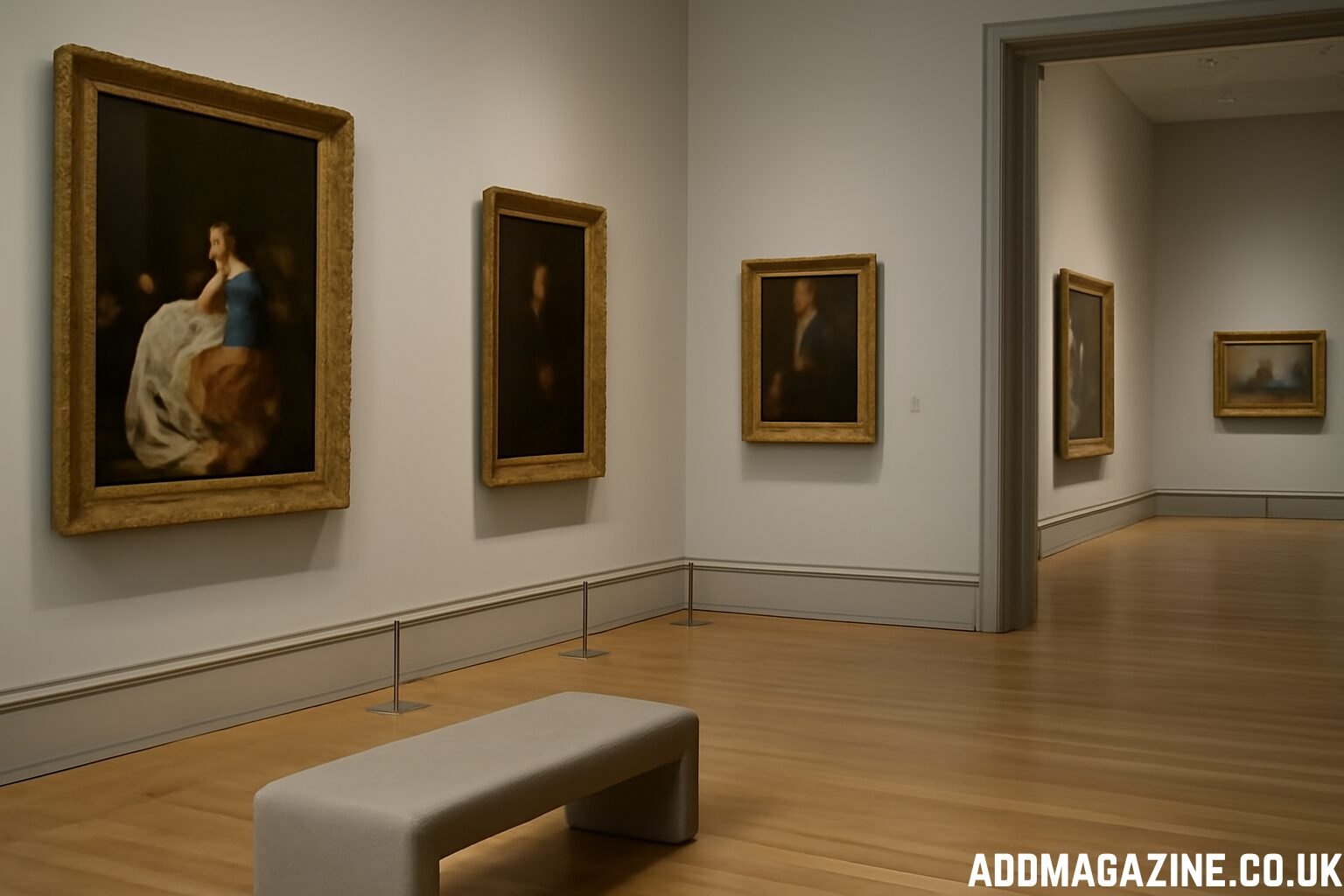The term “Museumsaufsicht” is a German word that can be translated as “museum supervision” or “museum oversight” in English. It refers to a position within a museum that is responsible for ensuring the proper functioning of the museum environment, overseeing both the exhibits and the visitors. In many ways, this role is the backbone of museum operations, ensuring that the institution runs smoothly on a daily basis.
While the term itself is used predominantly in German-speaking countries, the role it describes can be found in museums all around the world. It is vital for maintaining the integrity of the museum, protecting its collections, and providing a positive experience for its visitors. The position of Museumsaufsicht encompasses a wide range of tasks, from security duties to customer service, each of which plays an important part in the overall operation of the museum.
In this article, we will explore the responsibilities, required skills, and significance of the Museumsaufsicht job in detail. Whether you’re considering a career in this field or simply curious about how museums are managed behind the scenes, understanding the role of a Museumsaufsicht provides valuable insight into the inner workings of one of the world’s most cherished institutions: the museum.
Key Responsibilities of a Museumsaufsicht
A Museumsaufsicht typically works under the direction of museum managers and curators, and their role can vary depending on the size and type of the museum. However, there are several core responsibilities that are common across most positions:
1. Visitor Supervision and Assistance
One of the most important tasks of a Museumsaufsicht is overseeing the visitors within the museum. This involves ensuring that visitors follow the museum’s rules and regulations, such as maintaining silence in galleries, refraining from touching exhibits, and respecting restricted areas. Museums often contain delicate and valuable items that need to be preserved, so the Museumsaufsicht must be vigilant in ensuring visitors’ behavior doesn’t compromise the exhibits.
In addition to enforcing rules, Museumsaufsicht staff members are often expected to assist visitors. This might involve answering questions, providing information about exhibits, and guiding visitors to specific areas of the museum. They might also be involved in leading tours or helping visitors who need special accommodations.
2. Security and Safety
Security is another key responsibility for the Museumsaufsicht. They are tasked with ensuring the safety of both the visitors and the museum’s collections. This might involve performing routine checks of the galleries, ensuring that no items are out of place, and that all security systems, such as alarms or surveillance cameras, are functioning correctly.
In some cases, the Museumsaufsicht may need to intervene in situations where there is a risk of harm to the collection or to visitors. This might include directing people in case of an emergency or alerting security staff if a visitor is behaving inappropriately. Their presence ensures a secure environment where visitors can explore the museum with peace of mind.
3. Exhibit Care and Maintenance
While curators are responsible for the curation and maintenance of exhibits, Museumsaufsicht staff play a role in preserving the integrity of the exhibits during the day-to-day operation of the museum. This may involve ensuring that lighting, temperature, and humidity levels remain consistent in order to protect sensitive artifacts. They may also help with minor cleaning tasks or ensure that exhibits are properly displayed and not disturbed by visitors.
4. Administrative Support
In some cases, Museumsaufsicht staff may also be involved in administrative tasks. This could include logging visitor numbers, managing ticketing or entrance fees, or assisting with event coordination. They might also support the museum’s educational and public relations activities by interacting with visitors and providing feedback or insights that could improve the museum experience.
5. Emergency Response
In case of emergencies, Museumsaufsicht staff are often the first point of contact. This could involve dealing with health and safety issues, managing fire evacuation procedures, or helping visitors in distress. They must be trained to respond quickly and effectively in any situation that could disrupt the safety of the visitors or the protection of the exhibits.
Required Skills for a Museumsaufsicht
While the specific qualifications for a Museumsaufsicht role can vary, there are several essential skills and attributes that are generally required:
1. Communication Skills
Since Museumsaufsicht staff frequently interact with the public, strong communication skills are crucial. They must be able to explain museum policies and rules clearly, respond to questions, and assist visitors with their needs. This requires a friendly, approachable manner, as well as the ability to convey information effectively.
2. Attention to Detail
Given the responsibility for protecting valuable and often irreplaceable collections, attention to detail is a must. Museumsaufsicht staff need to be constantly vigilant about the condition of the exhibits and any potential threats to their safety. Whether it’s ensuring the temperature remains stable in a gallery or noticing if a visitor is too close to an artwork, their attention to detail plays a vital role in the museum’s operations.
3. Problem-Solving Abilities
Museumsaufsicht staff must also possess strong problem-solving skills. They may encounter a variety of situations, from dealing with difficult visitors to handling unexpected emergencies. The ability to think on their feet, assess situations quickly, and come up with appropriate solutions is essential to ensuring the museum functions smoothly.
4. Physical Stamina and Alertness
Since the job often requires long hours spent walking around the museum, standing for extended periods, or managing visitor traffic, physical stamina is important. Museumsaufsicht staff must also be alert at all times, watching over the exhibits and visitors to ensure everything is in order.
5. Multitasking Abilities
In a busy museum environment, there are many tasks that need to be managed simultaneously. Museumsaufsicht staff often need to juggle multiple duties, such as monitoring exhibit spaces, helping visitors, and managing security. Being able to multitask efficiently without losing focus is crucial to maintaining the museum’s operations.
The Importance of the Museumsaufsicht Role
While the role of Museumsaufsicht may not always be visible to the general public, it is undeniably vital to the overall operation of a museum. These individuals are often the first line of defense when it comes to ensuring the security and integrity of the museum. They are the ones who maintain order, ensuring that visitors adhere to museum rules and that the exhibits are protected from damage or theft.
Additionally, the Museumsaufsicht role ensures that visitors have a safe and enjoyable experience. By providing assistance and answering questions, they help create a welcoming atmosphere that encourages engagement and learning. This support is essential for museums that aim to educate the public and foster an appreciation for art, history, or science.
Without effective supervision, a museum could face a variety of problems, including security breaches, vandalism, or a diminished visitor experience. The Museumsaufsicht acts as a guardian of both the museum’s collections and its visitors, ensuring that the institution can continue to fulfill its mission.
Career Prospects and Challenges
The career prospects for a Museumsaufsicht are varied. This role can serve as an entry-level position in the broader museum or cultural sector. It is common for individuals in this position to gain experience and then move on to other roles within the museum, such as curators, education officers, or even administrative positions.
However, the job does come with its own set of challenges. It can involve long hours, weekend and evening shifts, and the need to deal with sometimes difficult visitors. The work can also be physically demanding, especially during busy periods when museums are crowded with guests. Despite these challenges, many find the work rewarding, particularly those with a passion for art, history, or culture.
Conclusion
The Museumsaufsicht role is an integral part of any museum, ensuring that both the exhibits and visitors are well cared for. While the job may often go unnoticed by the general public, its importance cannot be overstated. Museumsaufsicht staff play a crucial role in the daily operations of the museum, from maintaining security and order to assisting visitors and protecting valuable collections. As the museum sector continues to grow, the need for skilled and dedicated staff in these roles will only increase. For those interested in working in museums, the Museumsaufsicht job offers a unique and rewarding opportunity to contribute to the preservation of cultural heritage while fostering a positive experience for the public.




